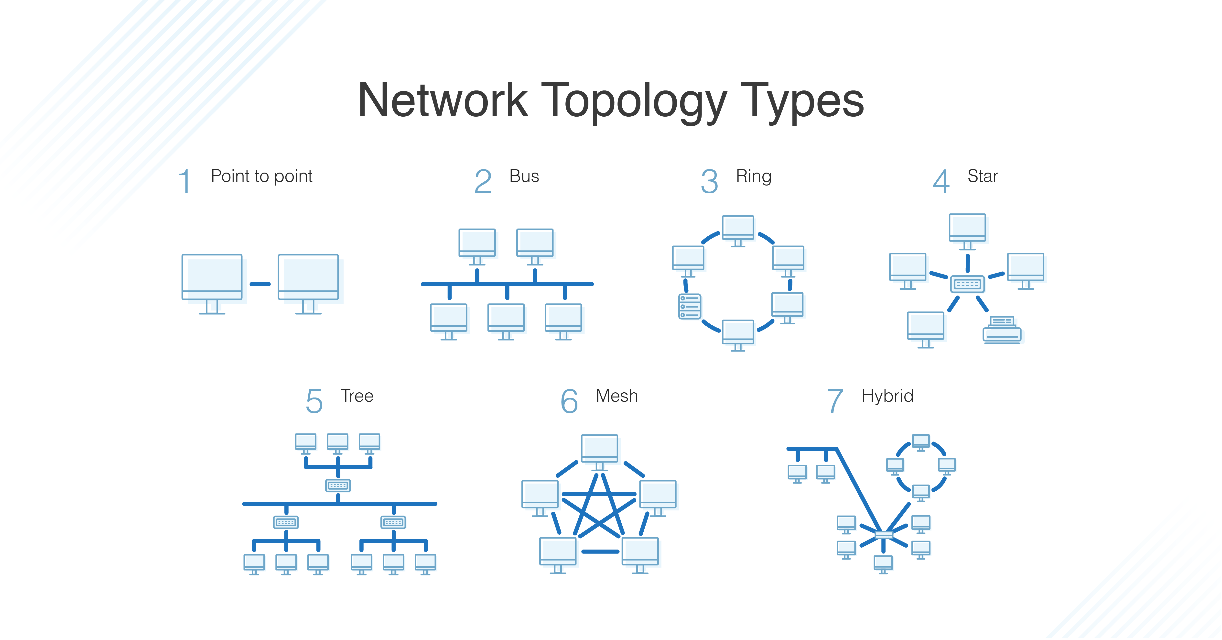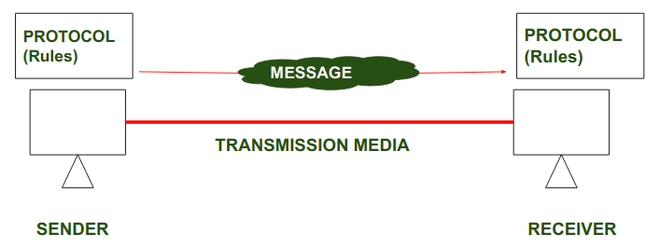Difference Between Network Topologies and Network Protocols
This article will provide you a detailed comparison between network topologies and network protocols. Before going into the main context first let us understand what are network topologies and network protocols.
What is network topology?
Network topology refers to how devices (such as computers, servers, switches, and routers) are connected to a computer network. It defines the physical and logical arrangement of these devices and how data is transmitted between them.
There are various types of network topologies present and a few of them are mentioned below
- Star Topology: In this type of topology a networking device is located at the center all the remaining devices are connected thereby forming a hub. Data is transmitted between devices through the central hub, making it easy to add or remove devices without disrupting the entire network.
- Bus Topology: In this type of topology all the networking devices are connected to a single cable. Data is transmitted along the bus and all devices listen for data addressed to them. This topology is simple to implement, but adding or removing devices can disrupt the entire network.
- Ring Topology: In this type of topology all the network devices are interconnected to each other thereby forming a circle. This topology provides fast data transmission and can support a large number of devices, but adding or removing a device can disrupt the entire network.
- Mesh Topology: In this type of topology each device is connected to all the remaining devices and this connection forms a mesh pattern. This makes the network very reliable, but it can be complex to implement and requires a large number of connections.
- Tree Topology: in this type of topology all the networking devices are connected hierarchically and the central device will act as the root node in a tree topology.

What is network protocol?
Network protocols are established sets of guidelines that control how devices communicate on a computer network. They define how data is packaged, transmitted, and received across the network, ensuring that all devices can communicate with each other effectively.

Few network protocols are very widely used
- TCP/IP (Transmission Control Protocol/Internet Protocol): these are a set of rules which are followed for data transmission across various networks. TCP is responsible for breaking data into smaller packets and ensuring that they are transmitted reliably and in the correct order, while IP is responsible for routing the packets to their destination.
- HTTP (Hypertext Transfer Protocol): This protocol is used to send data over the internet, including web pages. It specifies how a client (such as a web browser) and a server should format their requests and answers (such as a web server).
- FTP (File Transfer Protocol): This protocol is used to move files between machines connected to a network. It allows users to upload and download files from a remote server, and it provides a standard set of commands for controlling the transfer.
- SMTP (Simple Mail Transfer Protocol): The protocol described here is used to send email via the internet. It outlines message formats and email sending and receiving commands.
- DHCP (Dynamic Host Configuration Protocol): This is a protocol used for automatically assigning IP addresses to devices on a network. It allows devices to be added or removed from the network without requiring the manual configuration of IP addresses.
- DNS (Domain Name System): This protocol is used to allocate IP addresses to networked devices automatically. It enables the addition or deletion of devices from the network without the need for manual IP address setting.
Difference between network topologies and network protocols
| S.No. | Network topologies | Network protocols |
| 1. | It Describes the physical and logical arrangement of devices in a network. | It Defines the rules and conventions for data transmission between devices in a network. |
| 2. | Examples: Star, Bus, Ring, Mesh, Tree. | Examples: TCP/IP, HTTP, FTP, SMTP, DHCP, DNS. |
| 3. | It concerned with the way data is transmitted between devices. | It concerned with the format and structure of the data being transmitted. |
| 4. | It affects the overall performance and scalability of a network. | It affects the reliability and security of data transmission in a network. |
| 5. | It helps to determine the connectivity and accessibility of devices in a network. | It helps to determine the compatibility and interoperability of devices in a network. |
| 6. | It can be changed to meet specific network requirements. | It usually standardized and cannot be easily changed. |
| 7. | It can impact the cost and complexity of a network. | It does not impact the cost and complexity of a network. |
| 8. | It determines the fault tolerance and resilience of a network. | It determines the fault tolerance and resilience of a network. |
| 9. | Topologies affect the ability to add or remove devices from a network. | They Do not affect the ability to add or remove devices from a network. |
| 10. | Topologies impact the speed and efficiency of data transmission in a network. | Protocols impact the overhead and processing time of data transmission in a network. |
This is all about the comparison between network topologies and network protocols. Hope you understood this topic.